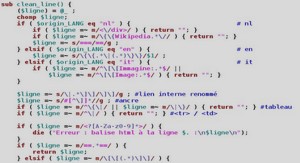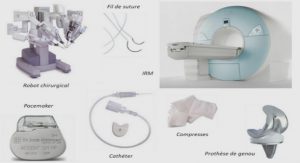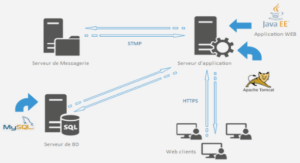Region of interests coding in WMSNs
WMSNs have limited resources nodes equipped with small camera, embedded CPU, and radio transceiver [65-68]. They ensure potential applications in different domains as we mentioned before in chapter one. One of the interesting applications of WMSN is habitat monitoring and video-surveillance [4;111-112] of a critical area of interest. In these applications a real-time transmission for the captured images between the camera nodes and the sink is necessary. Since the transmitted data has a huge volume, they must be compressed before transmission [75-77]. So, a low complexity image compression schemes adapted for WMSN, as presented in chapter 3, are desirable to compress image data without damaging its quality. The compression standards such as JPEG or JPEG2000 save transmission bandwidth but they are not adapted to be applied in WMSNs. Indeed, these schemes are computational intensive which increases energy consumption [65;69]. In the previous chapter, we have adapted some of those compression techniques to the requirement of WMSN. We have relatively sacrificed the image quality to reduce the computational complexity. Nevertheless, it is more advantageous to maintain low complexity and/or low energy consumption and at the same time provide high image quality. In certain scenarios, such as habitat monitoring and video-surveillance [111-112], the compression of certain parts of the image, which are called regions of interest (ROI), with a high quality to the detriment of the rest of the image (background) is one of the important steps in image processing and computer vision. The reason for that, the end user is only interested in some parts of the information, so, it would be interesting to apply a non-uniform processing to various regions of the image. In this chapter, we have proposed a ROI based compression. The idea is to start by detecting the ROIs using a simple change detection algorithm and then we compress and transmit only these ROIs. The proposed scheme reduces the processing energy, transmission energy and the amount of transmitted data, while preserving à high quality of received images. It should be noted that the energy consumed by the wireless sensor nodes during transmission is often much higher than the energy consumed during processing (i.e.: compression program).
Region of interests coding in WMSNs
Proposed region-of-interest based image compression scheme
The major task of object detection is to locate objects in images and extract the regions containing them [113-115]. The quality of object detection is highly dependent on the effectiveness of finding the appropriate features and changes that exist on the current image. However, in habitat monitoring and surveillance applications image frames are often characterized by low motion [112]. So, in the beginning of the proposed scenario the camera node captures the first frame which is called the reference frame and stores it in the buffer memory. This frame will be compressed and transmitted to the sink. In a normal situation, where a scalar node is used in addition (i.g. motion detector) to monitor the objects, if no object moves within the field of view (FoV) then the camera node stays inactive to preserve the energy. Otherwise, in case of a movement, the camera node, triggered by the scalar sensor, captures the current frame and feds it to a change detection processing block. Hence, we do not need to compress and transmit the full frame. A ROI is generated, compressed and transmitted by the sensor node to the corresponding sink. Sensor nodes only transmit the changed ROIs in the current frames according to the reference frame. In our proposed scheme, Integer DTT [74], standard JPEG quantization and entropy coder (Huffman) are applied to compress each bloc of ROI. In contrast, uniform JPEG compression compresses all the 8by8 blocs within the frames without taking into consideration the ROI. Figure 4.1 shows a general diagram of the proposed ROI based image compression. Figure.4.1. Proposed Region-of-interest based image compression
Change Detection
The main aim of habitat monitoring and video surveillance is detecting, identifying and/or tracking the object that entering the FoV. Any significant change in the scene is probably a moving object. The changed ROI are marked for further processing by the end user application, e.g., tracking or identification [116-117]. To detect the changes that occurred in a sequence of images of the same scene (static) taken at different times, a change detection algorithm is used. Its main objective is to mark the active blocks in the current frames according to the reference frame. The proposed ROI based compression employs the sum of absolute differences (SAD) [113] as a similarity metric. The SAD algorithm measures the similarity between two images and it is calculated by taking the absolute difference between each pixel in the two images. These differences are summed to create a simple metric of similarity according to the following formula: ∑ ∑ | | (4.1) Where: – are the pixels of the current block – are the pixels of the reference block. – is the position of the block in the image. and which M,N is the image size. SAD is a fast metric due to its simplicity compared to the other metrics. For 8by8 blocks, it takes 127 Additions and 64 absolute values. So, to simplify the analysis in our work we assume that the absolute operation is equivalent to addition operation. In the proposed scheme, The SAD is applied inside each 8by8 block, between reference frame and current frames instead of the whole image. At each block, the SAD is compared with a threshold . If the SAD result exceeds the predetermined threshold , the block is marked as changed. Thence, the marked blocks are compressed using DTT based image compression and then transmitted to the sink; however, the other blocks will be skipped. In our simulations, the value of the threshold is determined empirically. So, it is important to note here that the threshold is a crucial parameter and there are several works that made a detailed study on how the threshold should be chosen. If it is not chosen properly, severe quality degradation may occur. The reader can refer for instance to this papers.





